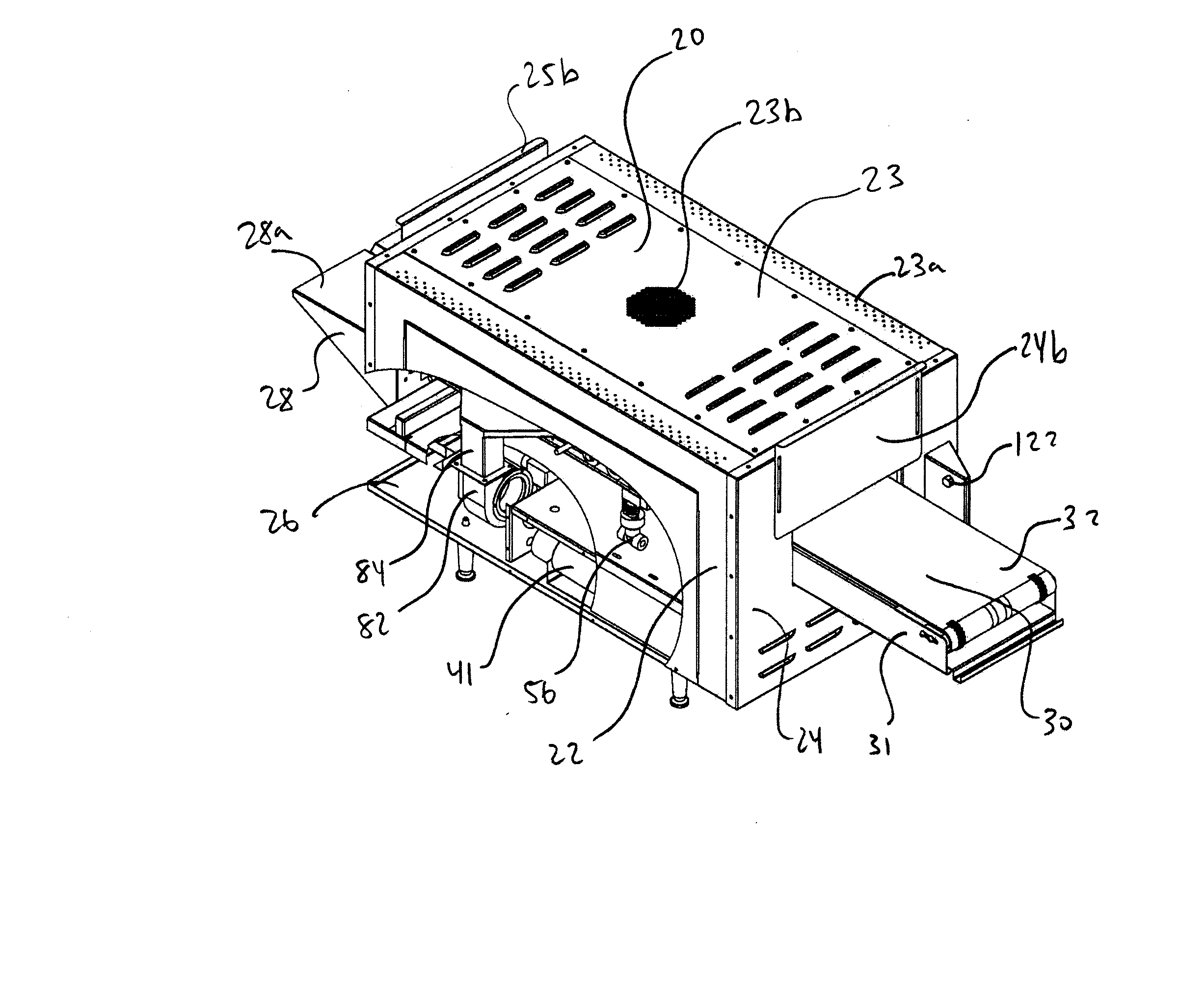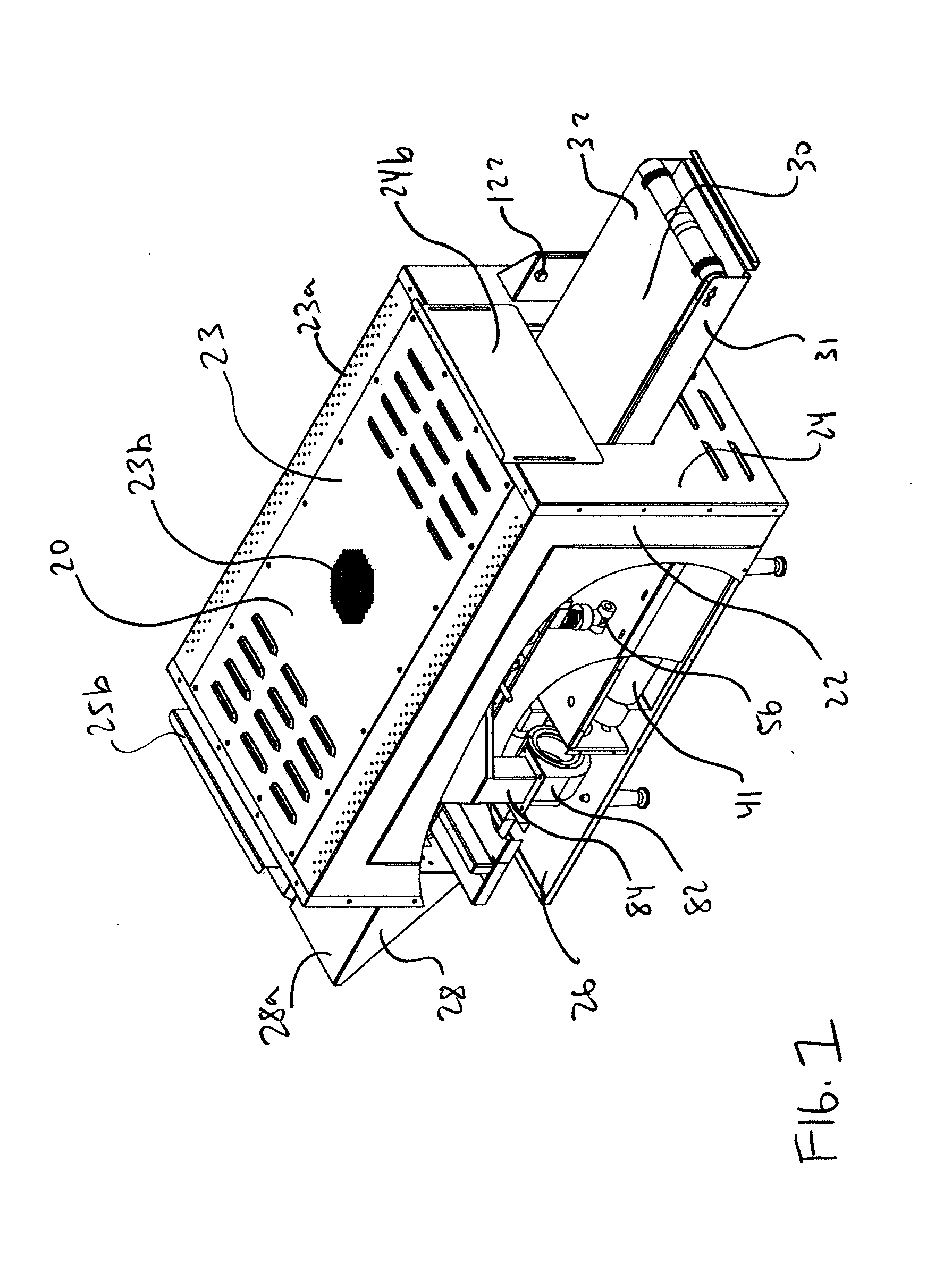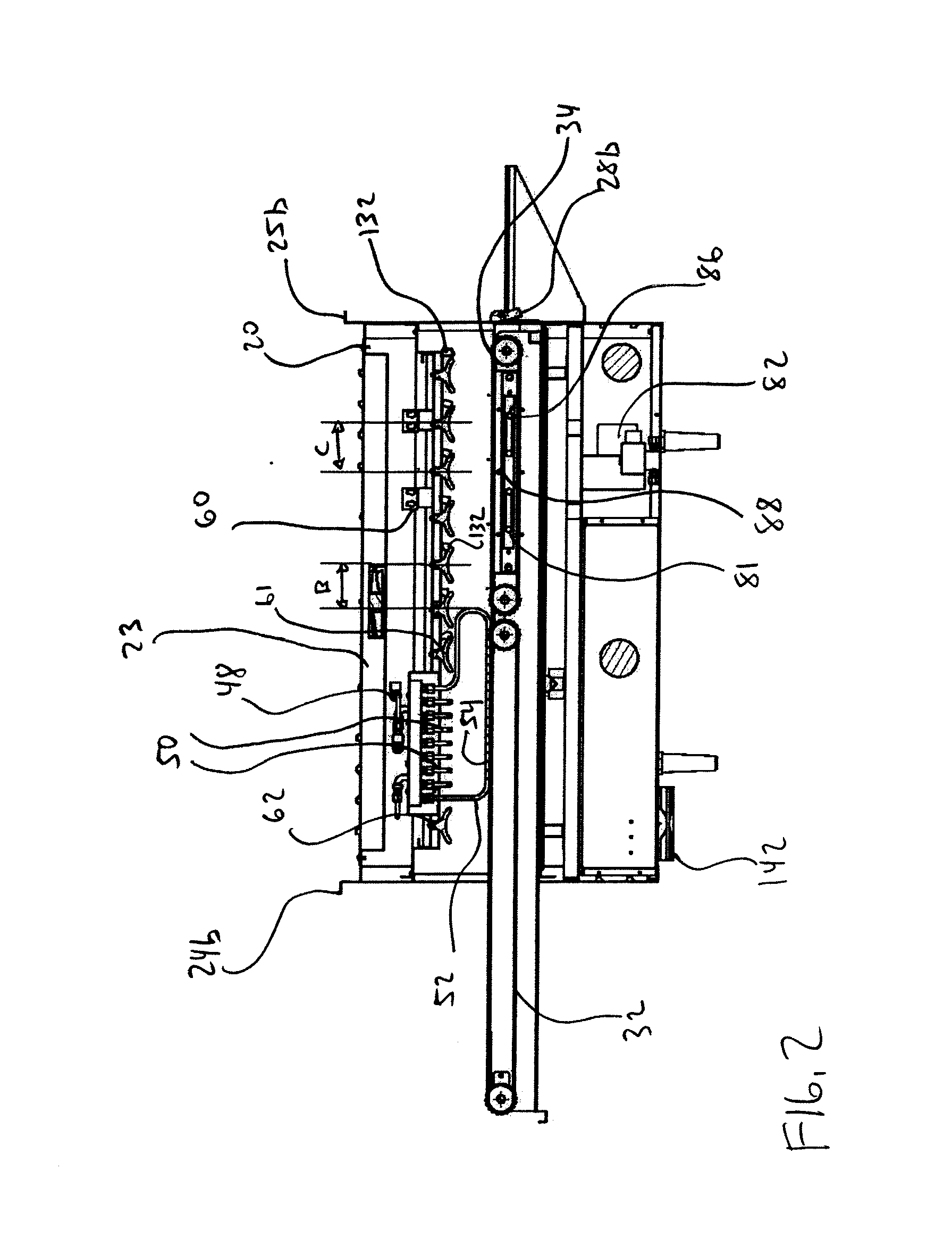Combination Conveyor Oven
a conveyor oven and oven technology, applied in ovens, baking ovens, lighting and heating apparatus, etc., can solve the problems of reducing the useful life of ceramic heating elements, unsuitable oven types for broader applications, and ruining food products, so as to achieve the effect of conserving energy
- Summary
- Abstract
- Description
- Claims
- Application Information
AI Technical Summary
Benefits of technology
Problems solved by technology
Method used
Image
Examples
Embodiment Construction
[0021] Although the following detailed description is focused on a conveyor-type oven, the embodiments discussed below can be successfully implemented in other types of ovens or heating apparatuses.
[0022] Turning now to FIGS. 1-6, a combination conveyor oven 10 is provided. Generally, the oven 10 includes a housing 20, a conveyor system 30, a steam system 40, a radiant heating system 60, and a forced convection system 80. Each of the steam system 40, the radiant heating system 60, and the forced convection system 80 are operatively controlled by a controller 124 that is provided within the housing 20 and operates each of the components based on the operating condition of the oven 10 as well as signals from a plurality of sensors provided within the oven 10. Accordingly, by selective operation of each of the steam system 40, the radiant heating system 60, and the forced convection system 80, a food product 12 may be fully cooked or toasted within the time it takes the food product 1...
PUM
 Login to View More
Login to View More Abstract
Description
Claims
Application Information
 Login to View More
Login to View More - R&D
- Intellectual Property
- Life Sciences
- Materials
- Tech Scout
- Unparalleled Data Quality
- Higher Quality Content
- 60% Fewer Hallucinations
Browse by: Latest US Patents, China's latest patents, Technical Efficacy Thesaurus, Application Domain, Technology Topic, Popular Technical Reports.
© 2025 PatSnap. All rights reserved.Legal|Privacy policy|Modern Slavery Act Transparency Statement|Sitemap|About US| Contact US: help@patsnap.com



